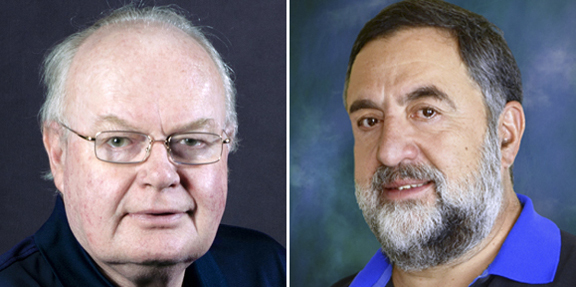
CIMdata’s Keith Meintjes and Advanced Engineering Solutions’ Andreas Vlahinos as panelists for a LIVE roundtable chat on topology optimization (January 31, 2017, 11AM Pacific / 2PM Eastern).
Latest News
January 23, 2017
 CIMdata’s Keith Meintjes and Advanced Engineering Solutions’ Andreas Vlahinos as panelists for a LIVE roundtable chat on topology optimization (January 31, 2017, 11AM Pacific / 2PM Eastern).
CIMdata’s Keith Meintjes and Advanced Engineering Solutions’ Andreas Vlahinos as panelists for a LIVE roundtable chat on topology optimization (January 31, 2017, 11AM Pacific / 2PM Eastern). Are engineers familiar with topology optimization? Here’s a breakdown of their answers, as collected in DE’s recent Optimal Design Technologies Outlook survey.
Are engineers familiar with topology optimization? Here’s a breakdown of their answers, as collected in DE’s recent Optimal Design Technologies Outlook survey.Topology optimization—using algorithm-driven software to explore and identify the best design options—is an offshoot of the established simulation software industry. Though the technology has been around for some time, it appears to be meeting significant resistance, which hampers adoption.
In DE‘s recent Optimal Design Technologies Outlook Survey, when participants were asked to indicate their familiarity with topology optimization software, 29% of them say they’ve never heard of it; 41% say they have heard of it but are not familiar with it; and 23% say they’re somewhat familiar with it. Only a small number of them (7%) profess to be very familiar with it.
By contrast, only about 3% are in the dark about simulation software, the predecessor to optimization software. About 13% of them have heard of it but are not very familiar. But the majority claim to be somewhat familiar (47% ) or very familiar (37%) with simulation. Similarly, only about 3% of them claim to be in the dark on additive manufacturing (AM). About 18% say they have heard of AM but not familiar with it. Again, the majority are either somewhat familiar (45% ) or very familiar (34%) with AM.
(For more on the results of the Optimal Design Technologies Outlook Survey, check out By the Numbers section or read “A Contemplation on Topology Optimization” in January 2017 issue.)
The slow adoption may partly be attributed to the people’s lack of understanding of the way optimization software works. Sometimes the so-called optimal shape proposed by the software doesn’t match what an engineer might come up with based on his or her intuition or experience.
Next week, on January 31, 2017, at 11AM Pacific / 2PM Eastern, CIMdata’s Keith Meintjes and Advanced Engineering Solutions’ Andreas Vlahinos join DE‘s Kenneth Wong in a LIVE chat to discuss:
- How design optimization works;
- Whether the AI- or software-proposed answers can be trusted;
- Whether automated design will replace design engineers.
About the panelists:
Dr. Keith Meintjes has over 30 years of experience in the development and application of simulation tools to transform product development. His achievements include novel methods for combustion simulation, patents for engine design, and strategic planning for the world’s largest commercial high-performance computing (HPC) facility. He spent nearly 30 years at General Motors as part of GM’s Global CAE IT infrastructure team. He was named Senior Technical Fellow. He is currently an analyst at CIMdata.
Dr. Andreas Vlahinos received his Ph.D. in Engineering Science and Mechanics from Georgia Institute of Technology. He has been a professor of structural engineering at the University of Colorado, teaching courses in Structural Mechanics and in Computer Aided Structural Engineering. His background is in rapid product development through the implementation of Design For Six Sigma (DFSS) and Computer Aided Concurrent Engineering. He has worked with NASA, DOE, IBM, Coors, Lockheed Martin, Ford Motor Company, Rockwell Collins, and more.
Subscribe to our FREE magazine, FREE email newsletters or both!
Latest News
About the Author
Kenneth Wong is Digital Engineering’s resident blogger and senior editor. Email him at [email protected] or share your thoughts on this article at digitaleng.news/facebook.
Follow DE





